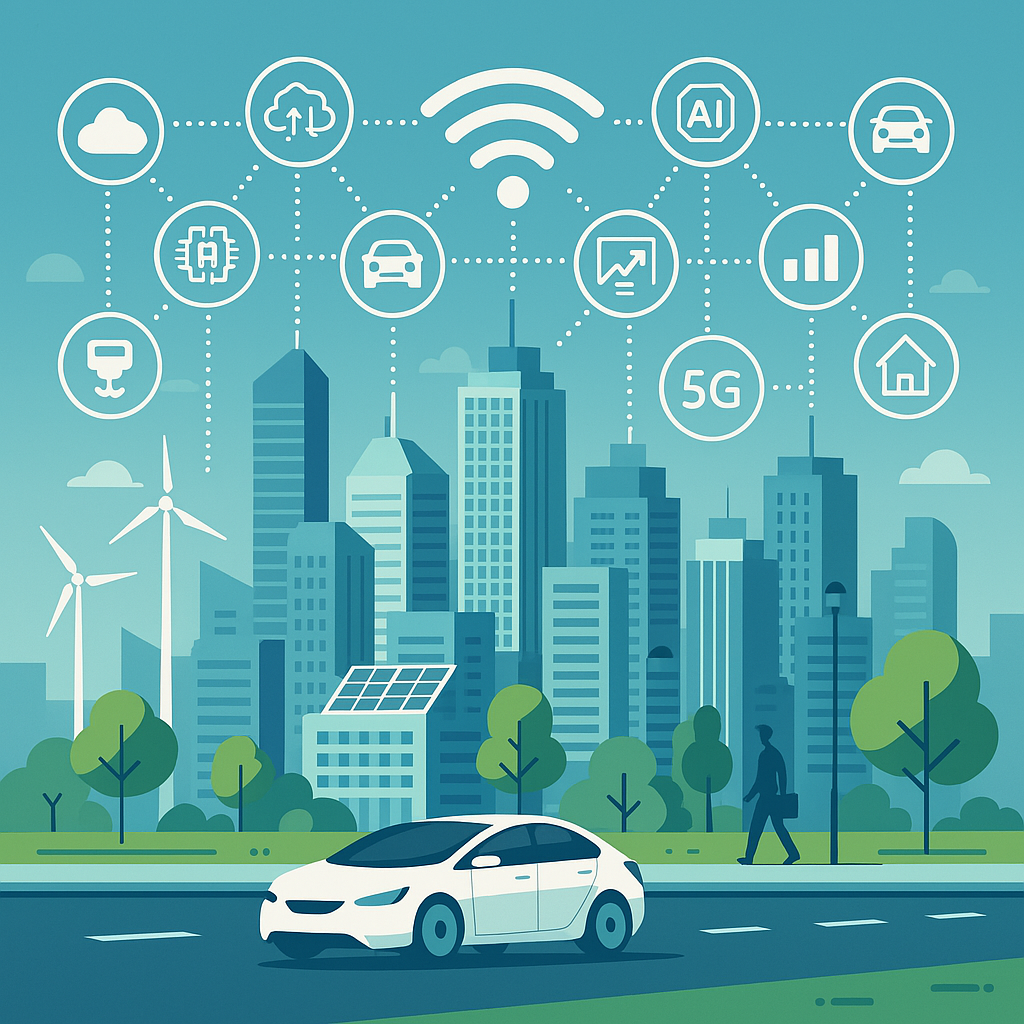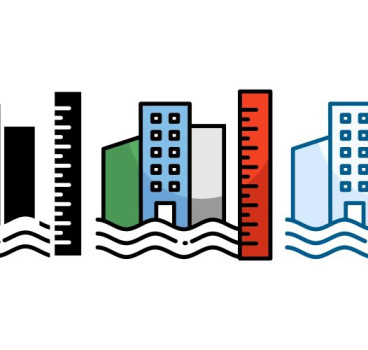Why civil engineering is the foundation for smart cities
Rapid urbanisation and technological advancement are transforming cities into "smart cities." These environments use interconnected technology and data to optimise resource management, enhance public services, improve quality of life and stimulate economic growth. However, while digital components like sensors and AI are becoming more prominent, physical infrastructure remains critical. This is why Civil engineers are essential in this process, designing the infrastructure that enables this smart technology, to create intelligent, resilient and data-driven urban systems, writes John Ridgeway.
Urban infrastructure has continually evolved, from basic pathways to intricate networks of concrete, steel and utility lines. For centuries, civil engineers have been the unseen designers and builders of society’s backbone - roads, bridges, water treatment plants, sewerage systems and energy grids. While physical infrastructure provision remains core to their expertise, pervasive connectivity, the Internet of Things (IoT), artificial intelligence (AI), and big data have introduced new examples.
Cities are transforming from static structures into living organisms where physical assets generate data, communicate and adapt. This demands that civil engineers transition beyond designing such structures to creating dynamic, intelligent and interconnected systems by integrating digital layers directly into the built environment.
Architects of physical-digital integration
All this means that civil engineers are more central than ever to smart city development as the architects of physical-digital integration. They design robust physical conduits for seamless data flow across a city. This includes strategically planning and placing fibre optic networks alongside new road construction or within existing utility corridors to ensure the high-speed data transfer critical for smart applications.
They also design structural components to host and power sensors for monitoring traffic, environmental quality, structural health, or pedestrian movement. This involves not just mounting devices, but ensuring their stable, durable integration into the physical landscape, often in challenging urban conditions.
Furthermore, civil engineers are responsible for the physical infrastructure necessary for effective data collection. This encompasses designing robust housings for smart meters, ensuring the structural integrity of smart streetlights with integrated cameras and environmental sensors and implementing smart waste management systems using sensor-equipped bins. Their expertise in material science, structural analysis, and geotechnical engineering ensures these smart components are functional, resilient and capable of withstanding environmental stresses. In an era of escalating climate change, civil engineers are crucial in designing infrastructure that resists extreme weather events and maintains the operational continuity of underlying digital systems, bridging the gap between digital aspiration and physical reality.
Smart city domains
Within smart city development, civil engineers contribute significantly across multiple domains. Their role extends beyond designing roads to creating intelligent networks that optimise traffic flow, enhance safety and support autonomous vehicles. They design sensor-embedded road surfaces for real-time data on congestion, enabling adaptive traffic signal control. They are instrumental in developing smart public transit, designing infrastructure for connected buses and trains and planning integrated multimodal hubs. Their work ensures physical integrity and digital readiness for electric vehicle charging infrastructure and data collection points for predictive maintenance in rail, reducing delays and improving passenger experience.
Civil engineers are also pivotal in transforming water, wastewater, energy and waste management into intelligent, interconnected networks. For water, they design intelligent distribution networks using smart meters and pressure sensors for real-time leak detection, supply optimisation and remote water quality monitoring, reducing waste and improving public health. In wastewater, their designs incorporate sensors to predict overflows and optimise pump operations. They integrate diverse renewable energy sources into urban grids, designing physical infrastructure for solar farms, wind turbines, and energy storage and facilitating microgrids. Their expertise also covers smart waste collection and sorting infrastructure.
Furthermore, civil engineers collaborate with architects and urban planners to design building envelopes that integrate sensors for energy efficiency, occupancy detection and intelligent climate control, ensuring seamless connection with broader city networks. Their involvement in master planning for smart districts considers physical layout, optimal digital infrastructure placement and future growth. They are crucial in designing urban green infrastructure like smart parks with real-time irrigation management or integrated Sustainable Drainage Systems (SuDS).
Civil engineers also design physical infrastructure to withstand extreme weather events, such as smart flood barriers and resilient power lines. Their ability to integrate physical protection with digital monitoring allows for real-time risk assessment and data-driven disaster response. They also oversee the strategic placement and robust installation of surveillance and physical security measures in public spaces.
Evolving skillsets and addressing challenges
The expanding scope of smart city development demands an evolution in the modern civil engineer's skillset. Data literacy is paramount - where engineers must collect, interpret, and apply large datasets from sensors and IoT devices to derive actionable insights. Proficiency in digital twin technology and Building Information Modelling (BIM) is crucial for simulating urban systems and lifecycle management. A systems thinking approach is essential for designing interconnected urban systems.

Furthermore, a deep appreciation for cyber-physical systems - the convergence of information technology (IT) and operational technology (OT) - is vital, alongside interdisciplinary collaboration with IT specialists, data scientist’s urban planners and policymakers. Ethical considerations, particularly around data privacy, equity and accessibility, must guide system design.
Despite their central role, civil engineers face challenges in smart city development. Integrating smart technologies into vast legacy infrastructure networks requires innovative retrofitting. Funding models for digitally-enabled infrastructure often differ, necessitating new investment approaches. Ensuring standardisation and interoperability among diverse smart systems is complex, as are heightened cybersecurity risks. Addressing the talent gap - attracting and training engineers with these evolving skill sets - is also a pressing need.
Despite these challenges, opportunities for civil engineers are transformative. They are uniquely positioned to drive innovation, translating cutting-edge technologies into tangible improvements in urban living. Their expertise is essential in converting ambitious policy goals into concrete infrastructure projects, making them indispensable leaders in the transition towards greener, smarter urban futures.
All this means that while smart city discussions often highlight the digital layer, algorithms, and data dashboards, these cannot function without a robust, intelligent physical foundation. Civil engineers are not merely participants - they are the essential architects of smart city development. Their expanded role includes not just traditional infrastructure design, but the intricate integration of digital intelligence into every aspect of urban infrastructure. By embracing data literacy, advanced modelling, systems thinking and interdisciplinary collaboration, civil engineers bridge the gap between digital aspiration and physical reality. They are key enablers of truly smart, sustainable and resilient urban evolution, ensuring our increasingly connected cities are built on solid ground, both literally and figuratively.
Additional Blogs

When fire breaks out who really knows the system
The story that caught my attention recently wasn’t about fire growth or building loss, it was about confusion. Specifically, the confusion faced by the fire service when arriving at buildings...
Read moreThe design and development of Nexus Layouts
When Zentia set out to rethink the suspended ceiling, the brief was clear: deliver greater creative freedom for designers, more distinctive visual identity for clients, and a solution that could keep...
Read more

The 100-year construction project or why longevity Is the new sustainability
For decades, the construction sector has defined sustainability through metrics such as operational energy, embodied carbon, material efficiency and circularity. These measures remain vital, but a...
Read more